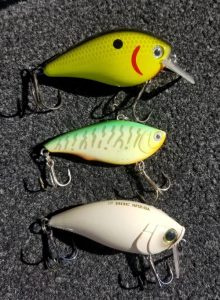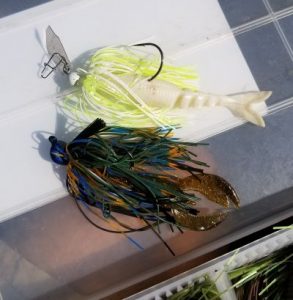Ron's Catch: How to Fish in Dirty Water
Have you ever fished in murky waters or encountered a dirty flow right after a rain? Although that may not look too appealing to most beginner anglers, it can actually work in your favor for catching bass.
It is true that bass that typically live in clear waters can experience a temporary shock to their environment when water suddenly rises or turns dirty. Bass that live in clear waters rely heavily on eyesight over other senses, so once the water gets dirty or muddy, it takes a little time for them to adjust. Bass still have to eat and, as a top predator, they usually get back on track in a hurry.
For an angler, this also takes a few adjustments. However, understanding what lures to present and how to fish in dirty water can provide some great advantages once you know where to look.
First, if the river system or lake has experienced a rising water level due to the heavy flooding or rain, start fishing shallow and look for visible cover. Bass tend to move shallow with the rising water to look for cover and any new food source that may be on the menu. It’s also important to note that dirty or murky water blocks out the sunlight the deeper you get, and oftentimes, is blacked out from light completely. Your shallower fish are always mor e willing to feed during these conditions, so I choose to avoid deep water all together. Focus on visible cover such as rocks, logs, brush piles, or docks. These would be some of my first targets. Fish will lay tight to those covers and become willing to strike just about anything that drops into their zone. You may need to make repeated casts to all sides of the structure you are fishing because they don’t stray too far in the dirty water to seek out food. Again, bass are opportunistic and still have to eat.
e willing to feed during these conditions, so I choose to avoid deep water all together. Focus on visible cover such as rocks, logs, brush piles, or docks. These would be some of my first targets. Fish will lay tight to those covers and become willing to strike just about anything that drops into their zone. You may need to make repeated casts to all sides of the structure you are fishing because they don’t stray too far in the dirty water to seek out food. Again, bass are opportunistic and still have to eat.
Now, there are several factors to consider when fishing water with low visibility, and water temperature plays a big part. If the water is colder or cooled down as a result of the waterflow, the fish may be less aggressive. In stable water or water that has an increased temp due to inflow, the fish may be more aggressive.
My favorite lures to consider are Spinnerbaits with a chartreuse/white color paired with a Colorado Blade for maximum vibration, or vibrating jig if you’re trying to cover your targets quickly. These lures tend to put out a lot of vibration and water displacement helping the bass to locate the lure. Then, the bright colors help them zero in on the bait as it passes through. Be sure to deflect off of the cover if possible and bring your bait by your target at several angles. A square bill crankbait is another favorite that mimics a baitfish and deflects off of cover very well. This style of crankbait will hang up less over other style crankbaits which is why I keep one tied on at all times. Note, fishing with flat matte colors like white, chartreuse, or yellow tend to be the best in colored waters.
Even though a reaction strike is hard to beat, I often find myself throwing down the 1-2 punch every time when searching for the best pattern under these conditions.
The follow up to the reaction lures would be a slower presentation. Many times, bass will sit so tight to a bush or laydown that they just don’t want to venture to far to pursue the faster moving lures. This is when I go to a jig or Texas rigged plastic. Flipping into the heart of a bush or dragging this presentation slowly through the center of their home will usually get the job done if they are there. Black and blue, or dark colored natural looking plastics work best, and although they will usually hit it pretty quick, there are times you need to leave your lure in the strike zone longer, especially if the water is colder. Remember, changing the lure profile or weight can make a big difference, so be conscious of changing until you unlock the puzzle. Once you figure out the pattern and how bass are relating to cover under these conditions, you can pick your targets and pattern for a great day of fishing.